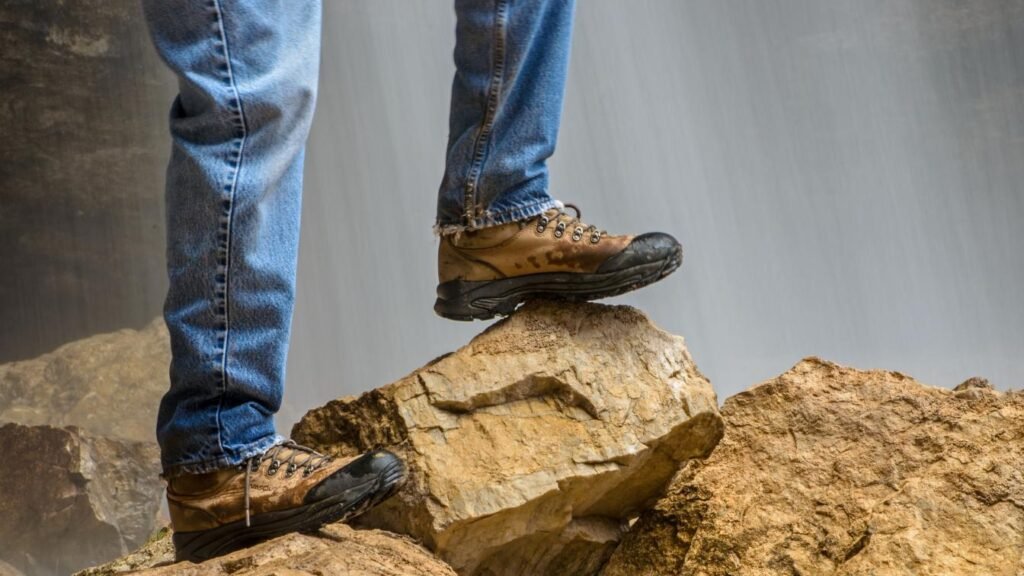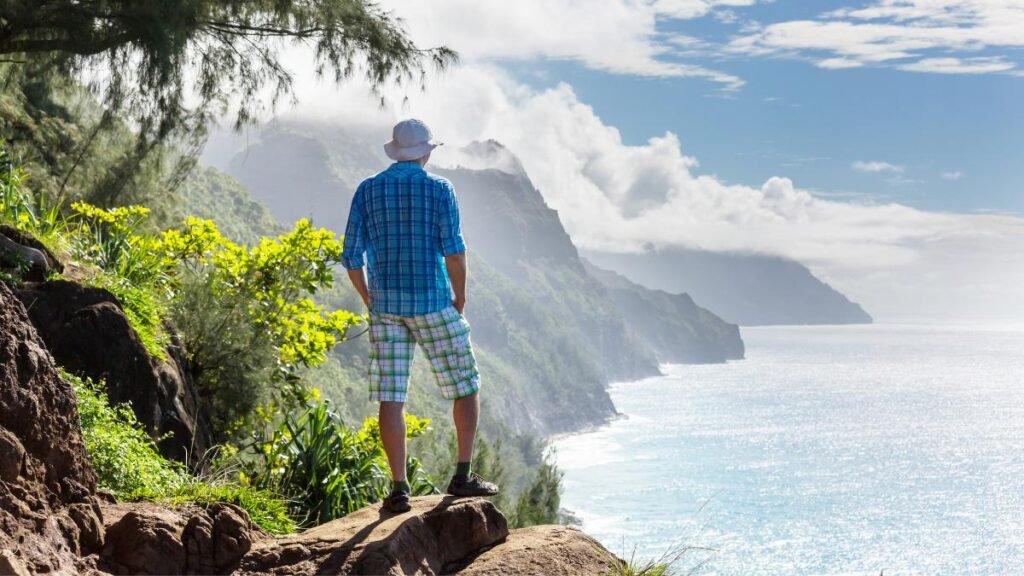You might be scratching your head, wondering if your trusty pair of Levi’s could double as hiking gear. After all, they’ve been with you through thick and thin, right? But there’s more to consider than just comfort as weather conditions and mobility also play a role.
This article covers all the factors you need to weigh up and presents some top-notch alternatives that could give your beloved jeans a run for their money.
Is it OK to Hike in Jeans?
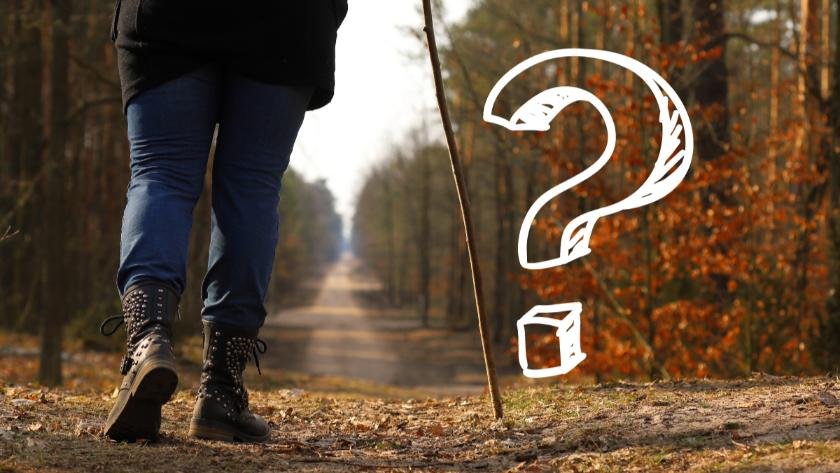
Is it OK to hike in jeans? Yes, but with some reservations. Jeans are not exactly known for their breathability or moisture-wicking properties. If you’re hiking in a hot climate, or even if you’re just working up a good sweat, jeans can become uncomfortable pretty quickly.
I’d say they aren’t your enemy on the trail, but they’re not always your best choice either.
When Might Jeans Be Appropriate?
Believe it or not, there are times when donning your favorite pair of denim might not be such a bad idea. If you’re heading out for a quick, casual hike on a cool, dry day, the trail is well-maintained, there’s minimal risk of rain, and you’re not planning on doing any serious climbing, your sturdy jeans could serve you just fine.
Why People Don’t Hike in Jeans?
The simple answer is, jeans aren’t built for hiking trips. When you’re out on the trail, comfort and mobility are key. Think about it – you’re climbing over rocks, stepping over fallen trees, and maybe even wading through a creek or two.
Jeans, with their tight fit and rigid material, can seriously limit your range of motion. They’re not exactly what you’d call “flexible”.
We’ve also got to consider the material drawbacks of jeans. Denim might be durable, but it’s heavy and it doesn’t wick away moisture. This means that if you sweat (and let’s face it, hiking is sweaty work), those jeans are going to stay damp and could even cause skin irritation or blisters.
So, while jeans might be great for a casual day out, they’re not what I would choose for a hike.
The Pros of Hiking in Jeans
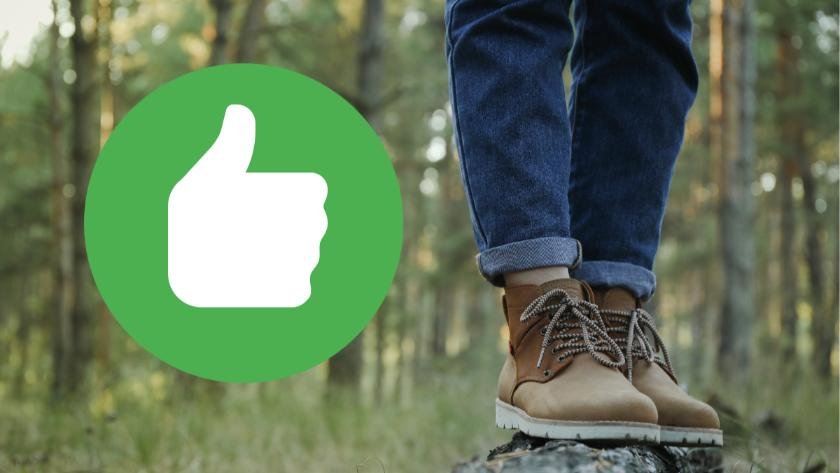
Price and Availability
One big advantage is price and availability. Jeans are something most of us have tucked away in our wardrobe already. And if you don’t, they’re easy to find and won’t break the bank.
Toughness
Another selling point is their toughness and shield-like qualities. Jeans can be quite rugged, standing up to scrapes and snags better than some high-tech fabrics. Sometimes, they even offer a decent barrier against wind and insects.
The Cons of Hiking in Jeans
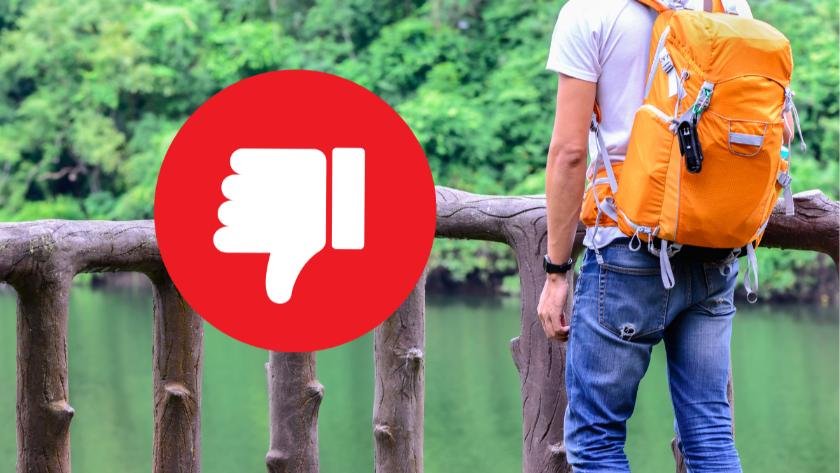
Moisture and Weight
One major hiccup is how they handle moisture and weight. Ever tried to dry out a pair of soaked jeans? It’s not fun, I can tell you that. They absorb water like a sponge and become heavy, making that uphill climb feel more like scaling Everest.
Insulation and Breathability
And then there’s the matter of insulation and breathability, or rather, the lack thereof. Jeans aren’t exactly known for their ability to keep you warm when it’s cold or cool when it’s hot. They also don’t allow much air to circulate, which can lead to discomfort and, in extreme cases, even heat exhaustion.
Why Are Hiking Pants Better Than Jeans?
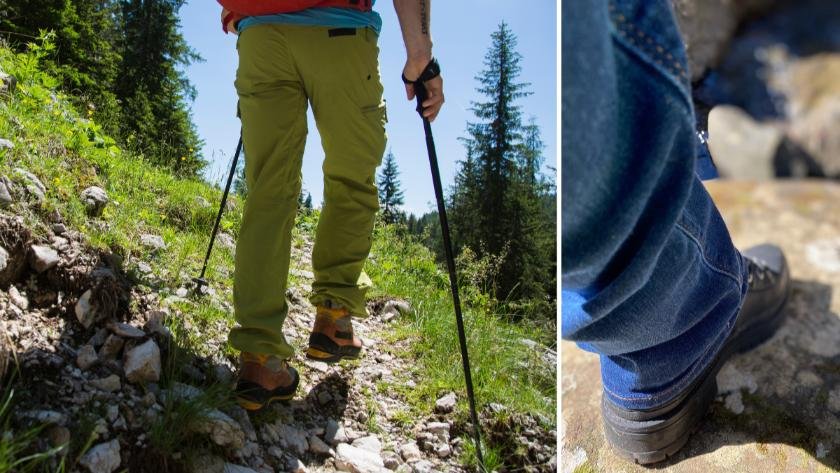
The best hiking pants outperform jeans in outdoor settings because of their material, design and functionality.
Material Advantages
When we talk about hiking pants, we’re talking about a blend of high-tech fabrics engineered specifically for outdoor adventures. These materials prioritize breathability and quick-drying capabilities, unlike your regular denim jeans that can get damp and stay damp for a long time.
The materials used in hiking pants are usually lighter as well, which means you’re not lugging around unnecessary weight on your trek. These fabrics often offer built-in sun protection – something your favorite pair of jeans can’t claim.
Design for Functionality
Here’s the thing about hiking pants: they’re not just pants, they’re a tool. They’re designed with features like articulated knees and gusseted crotches for enhanced mobility. Many have zippers that transform them into shorts – perfect for adapting to changing weather conditions. And let’s not forget the abundance of pockets for all your trail essentials.
Jeans, on the other hand, are more focused on style than function, which doesn’t quite cut it when you’re out in the wilderness.
Comparison with Jeans
So, let’s stack them up side by side. Hiking pants offer:
- Breathability
- Quick-drying fabric
- Sun protection
- Lightness
- Ffunctional design
Jeans, while stylish and durable, don’t quite match up in terms of functionality for outdoor activities. They can be heavy, lack breathability, and once wet, they take FOREVER to dry. They will never offer the same freedom of movement that hiking pants do.
The verdict? Hiking pants have a clear edge over jeans.
Alternatives to Jeans for Hiking
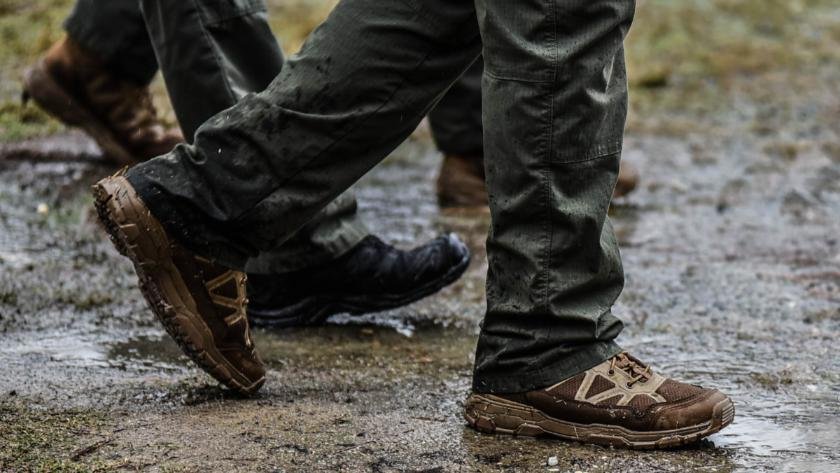
Hiking Pants
They are designed specifically for the trail, with features that make them a far superior choice over jeans.
For instance, the Columbia Men’s Silver Ridge Convertible Pant is a popular choice among hikers. It’s made from quick-drying nylon, has UPF 50 sun protection, and, as a bonus, the legs zip off to convert into shorts. Everything you can think of pretty much.
Another great option is the prAna Stretch Zion Pant, which offers the flexibility you need on those steep climbs and tricky descents. It also boasts a durable water repellent (DWR) finish to keep you dry when those unexpected showers hit.
Tactical Pants
But, we’re not just limited to specialized hiking pants. There are other denim alternatives that can serve you well on the trail. For instance, tactical pants like the 5.11 Tactical Men’s Stryke Operator Uniform Pants are built tough for demanding situations, but still offer the flexibility and comfort you need when hiking.
They’re made from a ripstop fabric, which resists tearing and ripping – something your jeans won’t do!
Other Materials
You can simply choose pants made from better materials. Nylon, for example, is lightweight, quick-drying, and resistant to abrasion, making it a great option.
Wool, particularly merino wool, is a natural temperature regulator and can keep you warm even when it’s wet.
Polyester, while not as breathable as some other options, is durable and generally easy to care for.
Making the Right Choice
Hiking in jeans isn’t necessarily a cardinal sin, but it’s far from the best choice you can make. When you’re out there on the trail, your comfort and safety are paramount, and jeans might not be your trusty companion in this regard.
With their thick fabric and slow drying time they can, and probably will, become a burden. They’re not designed for the dynamic movements hiking demands, and should you face rain or cross a stream, you’ll be dealing with heavy, soggy denim for hours.
If you’re planning a serious hike, you might want to consider alternatives like hiking pants that are made from lightweight, breathable, and quick-drying materials. They offer the mobility and comfort jeans lack.

